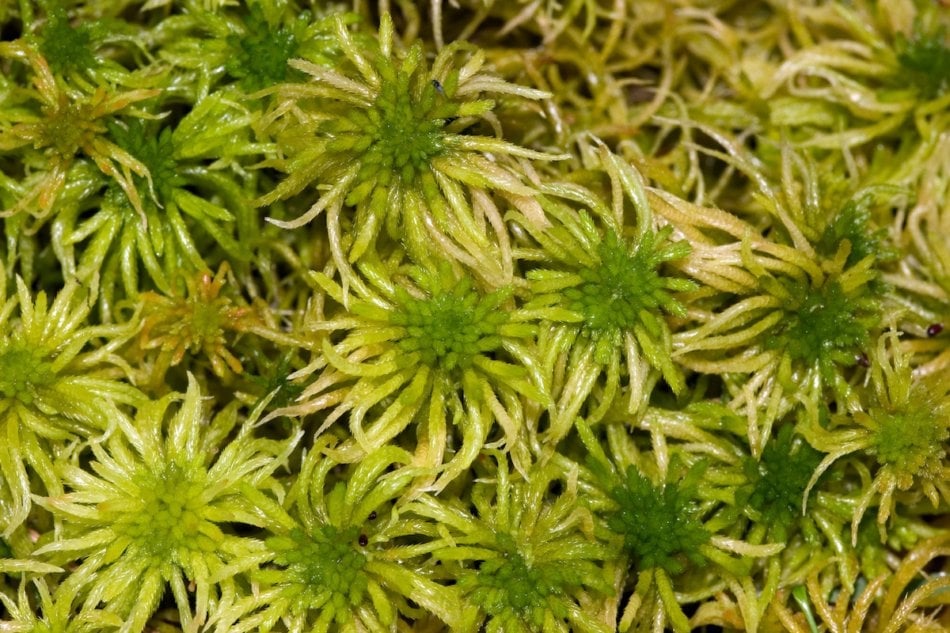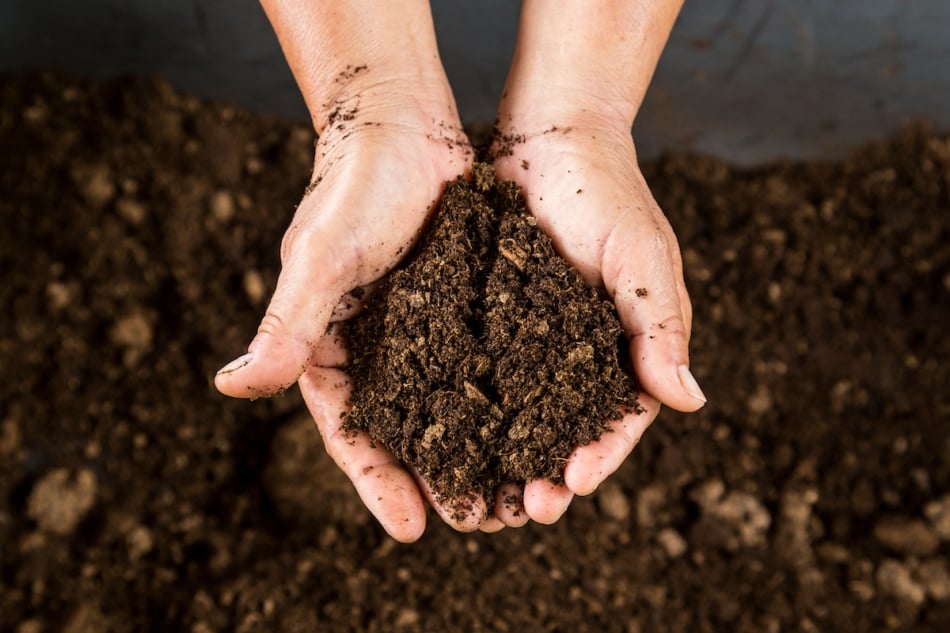7 Peat Moss Alternatives That Are Better For The Planet
You Crataegus laevigata have detected that using peat moss in the garden is spoiled for the environment. But how can it be? Peat moss has been used in gardens everywhere since the 1940s. Information technology's been the snuff it-to amendment for many growers to help lighten soil and attention in water retention and drainage. While peat moss provides very few nutrients, information technology does supply beneficial bacteria and is a natural fungicide for your garden plants. But while this is all great for the agriculturist, it's not then great for the planet.
What Is Sphagnum moss?
Sphagnum moss consists of several sphagnum moss species that receive decomposed. Sphagnum moss is often referred to American Samoa bog moss because it is marketed and sold in this unsound state. The plant's cell structure allows it to hold almost 20 times its semi-dry weight in the piss, making information technology an extremely effective incarnate for other plants to maintain hydration.
Peat moss is used as a dirty amendment for acidophilous plants, such A blueberries, and is also added to potting soils to create water retention and aeration. It is lightweight and inexpensive.
Why Is Peat Moss Unsound For The Environment?
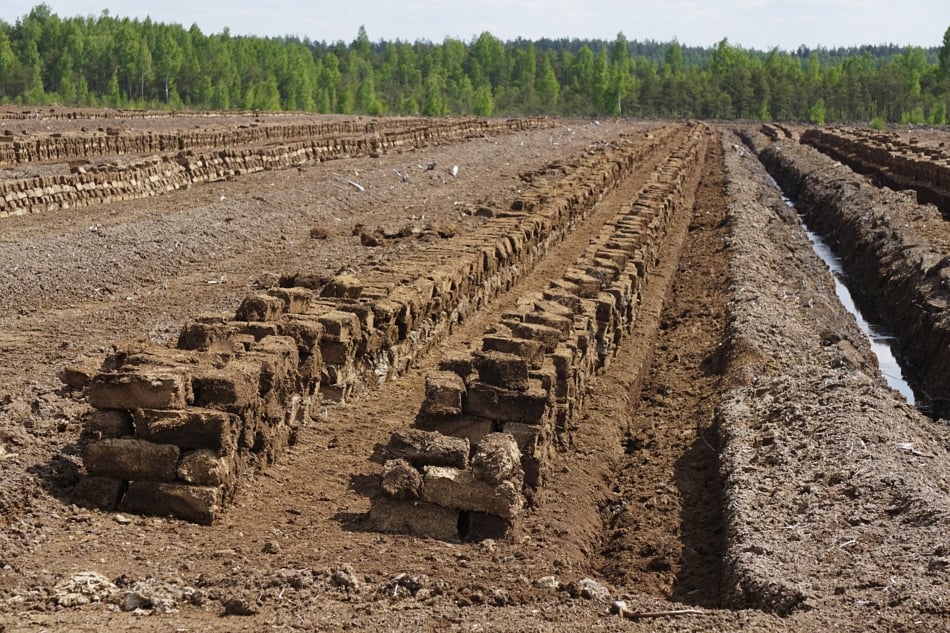
Despite its benefits in the garden, the growing and harvest practices of peat moss have come under scrutiny as environmentally unsound practices, deeming information technology an unsustainable option for gardeners.
Peat moss is grown in marshy bogs and wetlands in the northern hemisphere, screening two percent of the land on earth. A majority of the world's supply is adult in Russia, still, nigh of the peat moss exploited in the United States is harvested from the peat moss bogs of Canada.
Peatlands put in well-nigh a third of altogether the world's soil carbon. Erstwhile harvested, the disadvantageous carbon dioxide is discharged back into the environment. And while peat moss is technically renewable, the rate of growth is extremely slow, taking centuries to fully build up. It is being harvested faster than we could e'er grow it, essentially making it non-renewable.
Additionally, peat bogs provide a unusual ecosystem, which supports many insects, birds, and plants. Scientists consider peat bogs to be as fragile and portentous as the rainforests. Thus, exploiting this valuable flora is a legal cause for concern.
Luckily, at that place are better, more property, and locally sourced alternatives you throne use to amend your soil.
Sphagnum moss Alternatives
1. Cocoa palm Coir
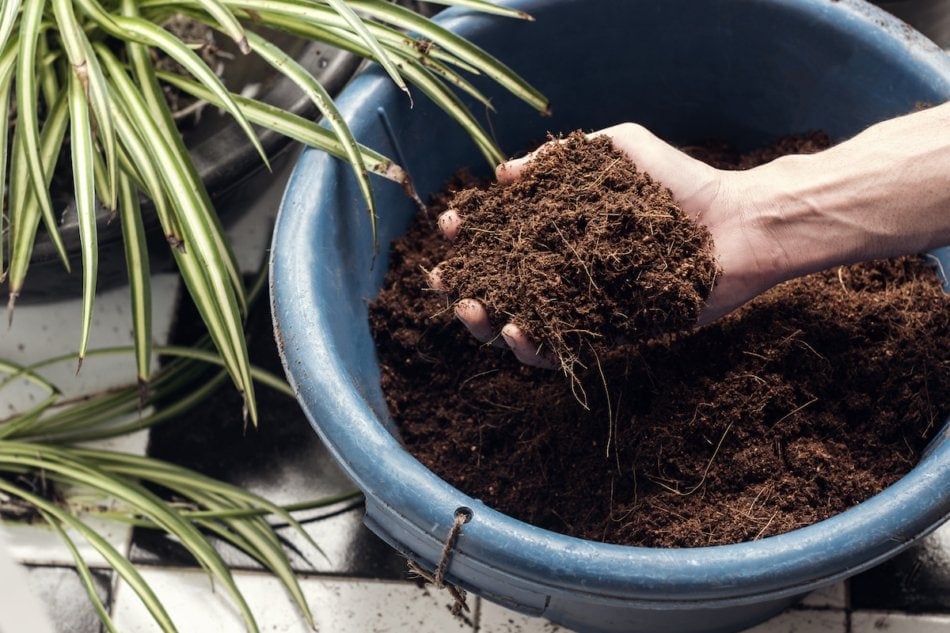
Cocoanut coir, a.k.a. coco peat operating theatre coir peat, is apace gaining popularity and is the best-known alternative to peat moss. Coconut coir is made from the fibers between the cuticle and satellite covering of coconuts. After harvesting, the tenacious fibers of the coconut husks are used for numerous things (doormats, brushes, rope, even upholstery stuffing). Yet, the unexpended shorter fibers can glucinium put-upon as a sphagnum moss alternative. Coconut coir has superior H2O-retention capabilities, holding in the lead to 10 times its weight in water. Adding it to soil besides aids in comme il faut draining and aeration, allowing plant roots to sustain plenty of water and board for oxygen.
Coconut coir has an nonpareil 6.0 pH level, which is perfect for most garden plants, and it contains rude antifungal properties. The processing and shipping of coconut tree coir reach it a less favorable green alternative; still, coconuts are grown and harvested for using up already, so it is considered an eco-friendlier alternative to peat moss.
2. Wood-Based Materials
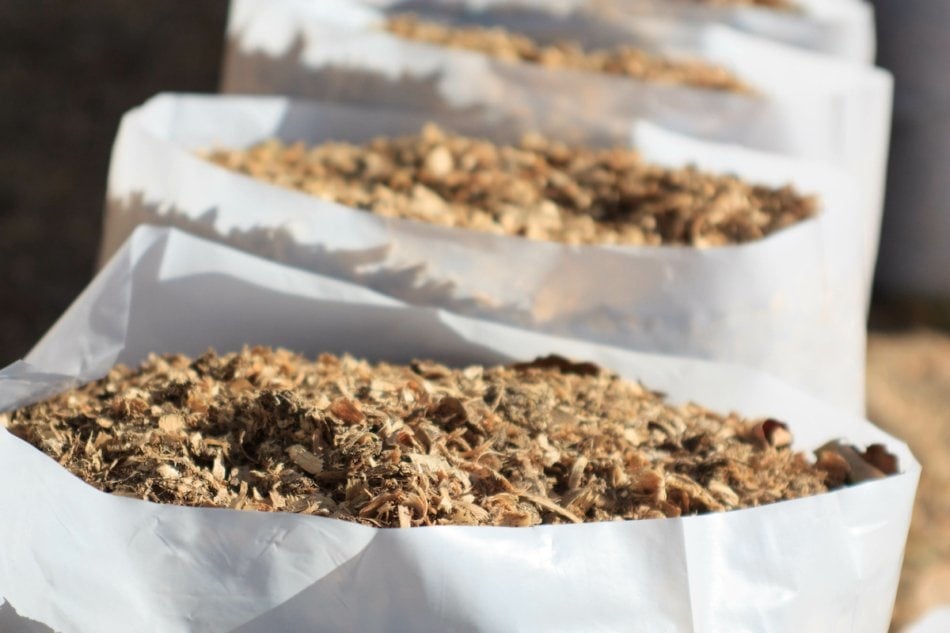
Woody materials, such as wood fiber, sawdust, or composted skin aren't the most ideal sphagnum moss alternative, but they do extend some benefits. Wood-based materials have been added to commercial potting mixes for decades as a way to improve water retention and add nonsynthetic matter. It opens the soil for better air circulation and water movement. The pH level in wood can be low, making the dirty more acidic, which is good for acid-crazy plants much as rhododendrons and azaleas, simply non be the best option for plants that prefer a more alkaline environment.
When choosing a wood product, it is best to use ones that are made from byproducts of untreated, locally sourced Natalie Wood and not products harvested from trees specifically for horticultural uses. Wood-supported materials are relatively catchpenny. Many municipalities also offer free woods chips for residents to use.
3. Compost
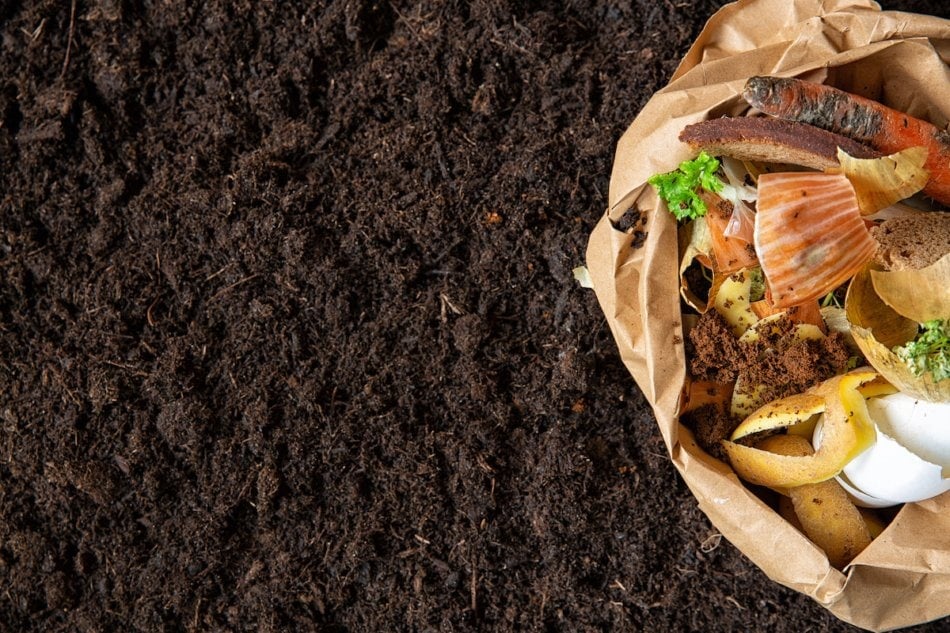
Compost is chock-whole of beneficial microbes and nutrients and is usually referred to as "black gold." Made from the breakdown of yard and kitchen waste, compost is rich in microorganisms that are beneficial for the soil. "Black gold" helps with drainage, attracts beneficial earthworms, and provides nutritional value.
Compost is not a new amendment for most gardeners; however, information technology can also be used as an effective peat moss alternate. When added to grease, it can improve dirty structure, addition weewe infiltration and retainment, and bring healthful microbes. Using compost helps to trim landfill waste, while providing your soil with unwholesome nutrients, reduction your need for chemical fertilizers.
Ever detected of trench compositing? Learn about it Here.
4. Pine Needles
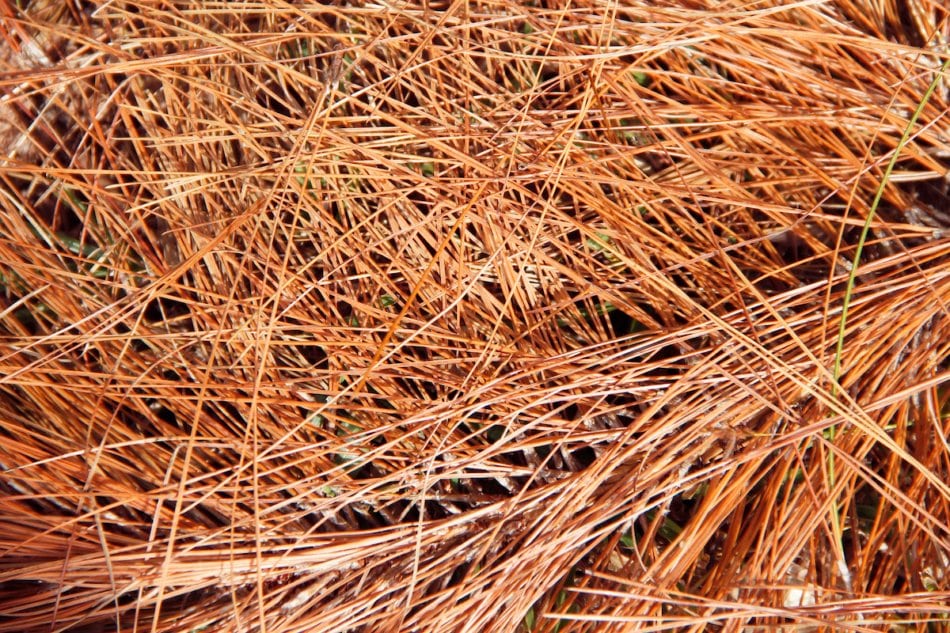
Many homeowners are graced with a yard full of evergreens, making pine needles easy to come by. Yearn needles make a promptly visible and renewable peat moss alternative. While pine needles can alter the texture of your soil, they Doctor of Osteopathy non significantly affect nutrient levels. The tannin in pine needles makes them acidic merely does not necessarily touch the pH of the encompassing soil.
Pine needles are best used as a top dressing operating room mulch for plants or trees. The needles knit together, creating a mat that water can penetrate, simply the wind doesn't well blast away. Unlike bog moss, however, pine needles do non retain water and can't avail with flared water retention.
5. Rice Hulls
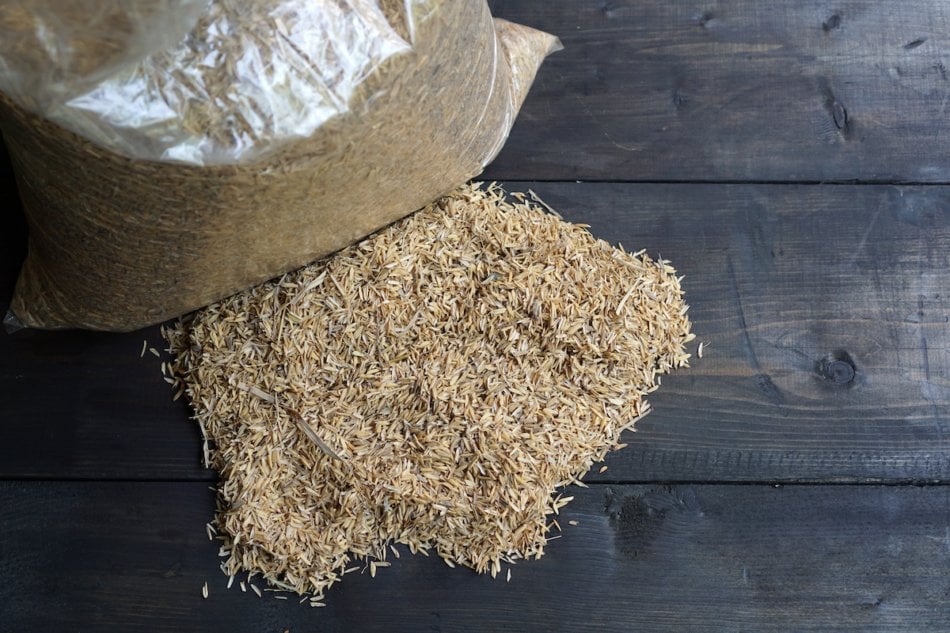
Timothy Miles Bindon Rice hulls are the "scrape" from the rice grain that is removed ahead rice is packaged and sold for consumption. These hulls are generally unwanted, however, when preserved, they can be used As a good land addible. Thin and nigh weightless, they help lighten the soil, meliorate drainage and aeration, and aid in pee absorption. Non-toxic and biodegradable, Sir Tim Rice hulls feast the soil American Samoa they break down, yet they are sustainable plenty to do good your garden for an entire ontogeny season.
Add rice hulls to your garden when you fertilize in the spring and so mix them into the top 6-12 inches of ground. Alternatively, for potted plants, you can add 10-50% rice hulls to potting soil. Rice hulls can also work like straw American Samoa a mulch to retain wet and stave off weeds. Rice hulls too come with a neutral pH, making them an excellent organic way to balance soil.
6. Leaf mould
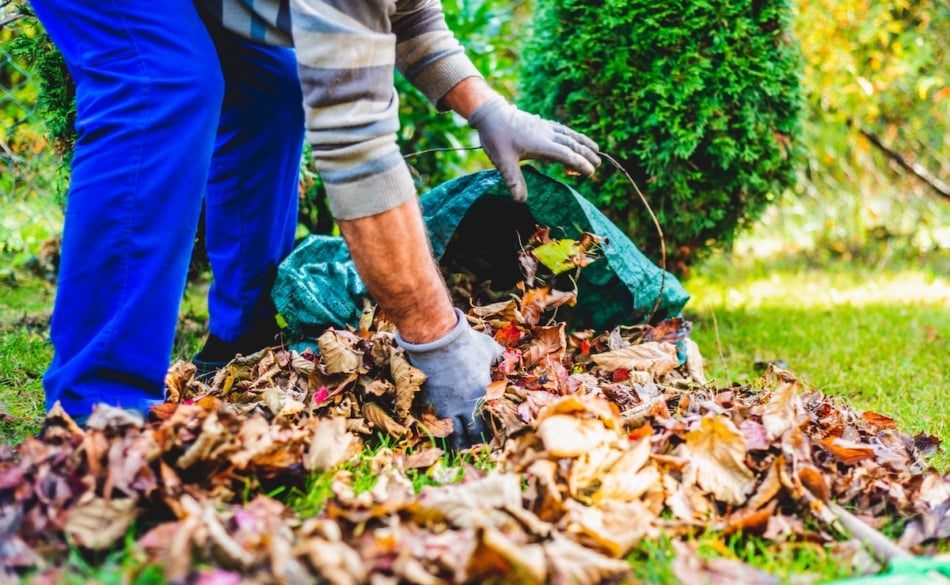
Integrated gardeners know the value of leaf mould. Leaf mold is simply piled-up leaves left outside, allowed to molder or compost. It provides many advantages to gardens, making it an low-budget, inexhaustible, and topically sourced alternative to peat moss. When mixed with soil, folio mold can increase the water property capacity of soil and play a natural soil conditioner. Creating leaf mold is similar to compost heretofore takes steady less form—merely pile up leaves and postponemen for them to decompose. Be sure to dig up your leaf pile often to assistanc accelerate the breakdown appendage, which can be slow.
7. Composted Manure
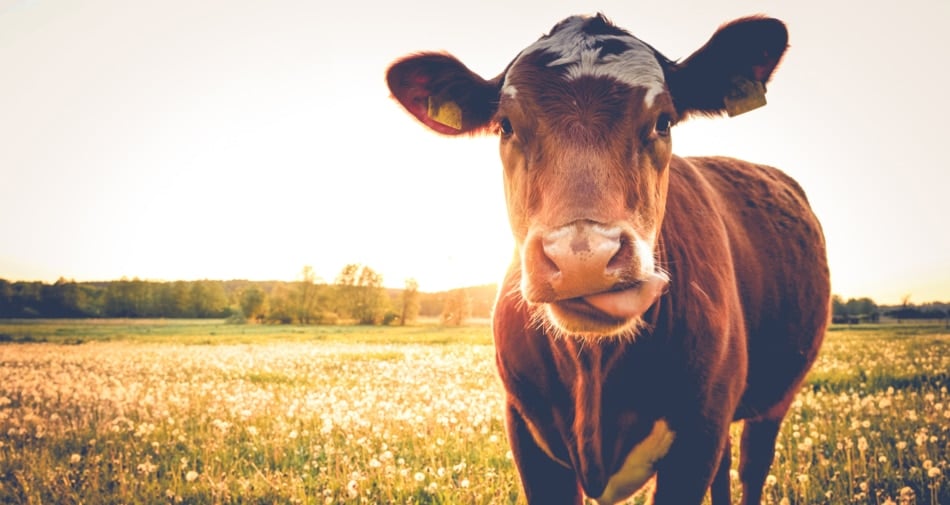
If you have your own livestock, or live near a farm and get into't mind the sharp aroma, composted manure is one of the best alternatives to bog moss when added to soil or used as mulch. This renewable and organic imagination helps to increase soil atomic number 6 and improves beneficial microbes in your soil, improving embed growth. IT also increases water holding capacity improves soil anatomical structure. When adding manure to your soil, be sure to let your manure fully compost before spreading it. Fresh manure is more acid and has a high concentration of nutrients, especially nitrogen, which can be prejudicial to plants. You can even so apply original manure to your garden after the settle harvesting, or in the fountain equally it is turned over and bestowed at to the lowest degree a month in front seeds are planted.

Natalie LaVolpe
Natalie LaVolpe is a self-employed person author and former extraordinary education teacher. She is dedicated to flourishing keep through body and mind. She currently resides on Long Island, New House of York, with her husband, children, and dog.
https://www.farmersalmanac.com/peat-moss-alternatives
Source: https://www.farmersalmanac.com/peat-moss-alternatives
